Photo
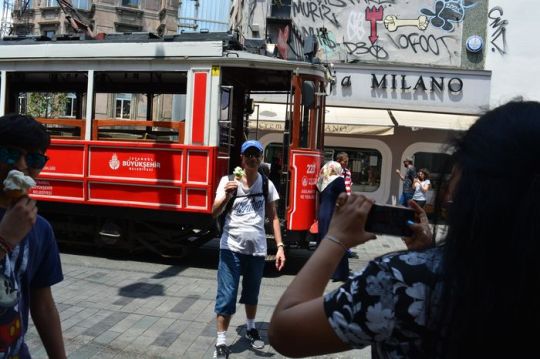
The Rival Claimant Prince Peter Karageorgovitch
A Quiet Life by Lake Geneva
Living modestly on the shores of Lake Geneva was Prince Peter Karageorgovitch, the claimant to the Serbian throne for the rival dynasty. Widowed with two sons and a daughter, his wife’s dowry income was halted by Prince Nicholas of Montenegro upon her death, leading Prince Peter to live a quiet life.
Anti-Obrenovitch Sentiment
In Serbia, an anti-Obrenovitch faction clandestinely worked to overthrow the ruling dynasty and restore the Karageorgovitches. Rumors circulated in Belgrade that Austria funded underground propaganda, aiming not just for a change in leadership but to sow chaos, provoke civil war, and justify military intervention Tour Bulgaria.
The Fateful Night
On June 10th, 1903, a family supper at the Palace preceded a tumultuous event. As midnight approached, King Alexander and Queen Draga retired to bed, unaware of the impending danger. Suddenly, uproar ensued as regiments stormed the streets of Belgrade. The Palace, shrouded in darkness, was besieged. A signal intended to open the doors went unanswered, leading conspirators to forcefully enter. The traitor tasked with facilitating their entry was found intoxicated, and upon failing to comply, met a fatal end.
The Prelude to Tragedy
The events of that fateful night in June marked the prelude to a tragic turn in Serbian history. As tensions simmered and rivalries intensified, the stage was set for further turmoil and upheaval in the days to come.
0 notes
Photo

Arrival in Otluk-kui
We arrived in Otluk-kui late at night, facing challenges in finding accommodation as most residents had retired for the night. Eventually, we encountered a helpful individual who directed us to a house where Mr. Baring had stayed the previous night, offering us a warm welcome. However, the hosts had little to offer in terms of sleeping arrangements due to the pillaging they had endured. Even basic items like cooking utensils had been looted.
Extent of Destruction
In Otluk-kui, approximately four hundred houses, out of a total of two thousand, were destroyed by fire. Although significant, the town suffered comparatively less damage than other villages, many of which were completely razed. Both churches and the bazaar were set ablaze, along with two boys’ schools. The girls’ school was spared destruction merely because it had not been identified by the arsonists Private Guide Turkey.
Atrocities Against Humanity
While the destruction of schools and churches is notable, it pales in comparison to the horrific atrocities perpetrated against humanity in Otluk-kui. Despite the somber nature of the insurrection’s narrative, there are moments of dark humor to be found. For instance, a Jewish peddler shared his ordeal with us, revealing a bizarre twist. Suspecting him of potentially divulging information about the ongoing events, the insurgents detained him, resorting to an unconventional method to ensure his silence. They compelled him to renounce Judaism, symbolized by placing a Bulgarian cap on his head and assigning him the Christian name “Ghiorghy,” or George. However, they stopped short of baptizing him, and their skepticism about his conversion was evident as they confined him to a private house within the village, prohibiting him from leaving.
The account of events in Otluk-kui illustrates the profound suffering inflicted upon its residents, not only through physical destruction but also through the dehumanizing acts committed against individuals. Amidst the grim narrative, there are glimpses of dark humor, underscoring the surreal and tragic nature of the events unfolding in the region.
0 notes
Photo
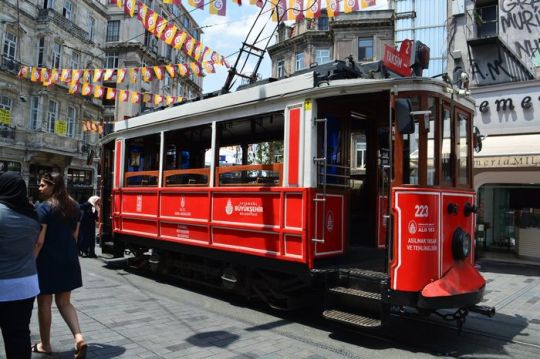
Invocation and Prayer
The religious leader, Nakib el §erif Efendi, commenced the ceremony by kissing the Sultan’s skirts and offering his prayer.
Oath and Allegiance
Kaymakam Pasha, the Admiral, and the Chief of the corps of halberdiers approached with the roll, standing to the right of the Sultan. The Sheikhulislam followed, taking his oath of allegiance, praying, and then joining the religious leader.
Ceremonial Gestures
Kaymakam Pasha, adorned in ceremonial attire, stooped and kissed the Sultan’s skirts, receiving applause. Upon the Sultan’s request for a repetition of the applause, it was granted. The Admiral, also applauded twice, stood beside Kaymakam Pasha and introduced forthcoming officials Istanbul Fun Tours.
Announcement of Accession
Following the ceremonies, the Chief Town-crier Agha was tasked with announcing the Imperial Accession to the throne from the four major mosques: Ayasofya, §ehzade, Süleymaniye, and Sultanahmet.
Ceremonial Protocol
During Sultan Mustafa Khan’s reign, officials took oaths in ceremonial attire, mirroring tradition. However, this time, the ceremony unfolded differently.
Rituals for the Departed Sultan
The late Sultan Abdulhamit I was taken from the Harem gate for ritual ablution performed by the Master Yazici under a baldachin. Upon the purse-bearer’s notification of protocol requirements, permission was granted for the necessary ceremonies. The Sheikhulislam, Kaymakam Pasha, and the Admiral paid their respects to the departed Sultan before departing themselves.
This account underscores the solemn rituals and ceremonial protocols observed during the transition of power and the mourning rites for the deceased Sultan.
0 notes
Photo

Events During the Fortification Efforts
Incidents During the Fortification
Throughout the ten days of constructing the earthwork fortifications, several incidents occurred, highlighting the tension and resistance against authority. Initially, when two tax-collectors approached the area, they were met with demands to surrender their weapons. Upon refusal, they were fired upon and killed. These tax-collectors, although not official government officers, represented the despised tax farmer, contributing to the animosity of the villagers due to their exploitative practices.
Subsequent Confrontations
Shortly after the altercation with the tax-collectors, seven more Turks approached the village and were promptly ordered to surrender. They complied, and the group, comprising two zaptiehs, two tax-collectors, one clerk, and two Pomaks (Mohammedan Bulgarians), were held in a Bulgarian house. Despite being detained, they were treated well, except for one zaptieh who was deemed to have committed acts of cruelty and was consequently sentenced to death and executed Bulgaria Tours.
Capture of a Carriage
A few days later, a closed carriage approached the fortifications along the road and was commanded to surrender. Ignoring the demand, the occupants attempted to flee and were met with gunfire. The carriage was seized, revealing two men and three women inside. Tragically, two men and one woman were killed in the exchange of fire. Another woman, in a desperate attempt to defend herself, grabbed a sabre and struck at one of the insurgents, resulting in her death. The surviving woman was captured but treated well until the arrival of Turkish forces, upon which she was released.
Limited Casualties Caused by Insurgents
According to available information, these incidents resulted in the deaths of only two women at the hands of the insurgents. However, one of these deaths was accidental, highlighting the chaotic nature of the confrontations. Contrary to claims by Turkish authorities in Philippopolis, who reported a higher death toll of twelve, concrete evidence supporting these claims is lacking, leading to skepticism from observers like Mr. Schuyler.
The events surrounding the fortification efforts were marked by confrontations and violence, reflecting the simmering tensions between the villagers and representatives of authority. While resistance was evident, casualties were limited, with most incidents arising from clashes during attempts to disarm or apprehend individuals. Skepticism regarding official casualty figures underscores the need for further investigation and verification of claims made by both sides involved in the conflict.
0 notes
Photo

Resilience Amidst Ruin The Story of Raddovo
A Once Flourishing Village
As we journeyed to this destination, we made a stop for the night in the village of Raddovo. This quaint settlement, once bustling with life, now stands as a somber testament to the devastation wrought by the Bashi-Bazouks. Raddovo, comprising 160 houses, lies in ruins, its once vibrant streets now silent and desolate. Not a single structure remains intact, reduced to rubble and ash by the merciless onslaught.
Tales of Survival
Despite the widespread destruction, the resilient spirit of Raddovo’s inhabitants endures. Gathered around us, they recounted their harrowing ordeal with a mix of trepidation and determination. Faced with the imminent threat of the Bashi-Bazouks, they chose flight over confrontation, fleeing their homes in search of safety. Thanks to timely warnings, the majority managed to escape, with only twenty-two men falling victim to the violence. Remarkably, all women and children were spared from harm.
Betrayal and Loss
However, their reprieve was short-lived. Upon their return to the village, a cruel fate awaited eight of their fellow villagers. Arrested under false pretenses, they were callously executed while en route to Philippopolis, their lives brutally cut short. The discovery of their bodies, strewn along the roadside, served as a grim reminder of the atrocities inflicted upon innocent lives Guided Turkey Tours .
Struggling to Rebuild
Returning to their once thriving homes, the inhabitants of Raddovo were met with utter devastation. Stripped of their belongings, their livestock, and their livelihoods, they now face the daunting task of rebuilding their lives from the ashes. With their homes reduced to rubble and their possessions plundered, they find themselves destitute and bereft. Compounding their plight, the refusal of the Turks to return their stolen livestock further exacerbates their hardships, leaving their harvests to wither in the fields.
A Resilient Spirit
Despite the adversity they face, the people of Raddovo persevere, clinging to hope amidst the ruins. Theirs is a story of resilience in the face of unimaginable loss, a testament to the indomitable human spirit. As they navigate the challenges of rebuilding their shattered community, they draw strength from their unity and determination. Though the road ahead may be fraught with obstacles, their resolve remains unshaken, a beacon of hope amidst the darkness of despair.
0 notes
Photo
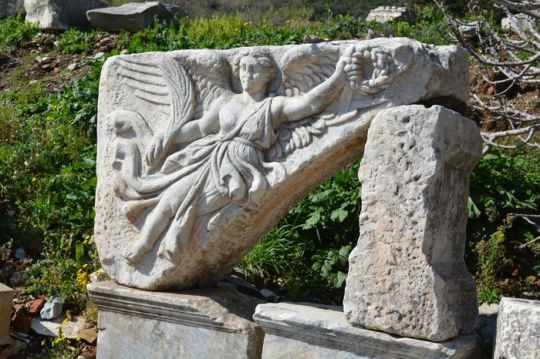
Resilience Amidst Ruin The Story of Raddovo
A Once Flourishing Village
As we journeyed to this destination, we made a stop for the night in the village of Raddovo. This quaint settlement, once bustling with life, now stands as a somber testament to the devastation wrought by the Bashi-Bazouks. Raddovo, comprising 160 houses, lies in ruins, its once vibrant streets now silent and desolate. Not a single structure remains intact, reduced to rubble and ash by the merciless onslaught.
Tales of Survival
Despite the widespread destruction, the resilient spirit of Raddovo’s inhabitants endures. Gathered around us, they recounted their harrowing ordeal with a mix of trepidation and determination. Faced with the imminent threat of the Bashi-Bazouks, they chose flight over confrontation, fleeing their homes in search of safety. Thanks to timely warnings, the majority managed to escape, with only twenty-two men falling victim to the violence. Remarkably, all women and children were spared from harm.
Betrayal and Loss
However, their reprieve was short-lived. Upon their return to the village, a cruel fate awaited eight of their fellow villagers. Arrested under false pretenses, they were callously executed while en route to Philippopolis, their lives brutally cut short. The discovery of their bodies, strewn along the roadside, served as a grim reminder of the atrocities inflicted upon innocent lives Guided Turkey Tours .
Struggling to Rebuild
Returning to their once thriving homes, the inhabitants of Raddovo were met with utter devastation. Stripped of their belongings, their livestock, and their livelihoods, they now face the daunting task of rebuilding their lives from the ashes. With their homes reduced to rubble and their possessions plundered, they find themselves destitute and bereft. Compounding their plight, the refusal of the Turks to return their stolen livestock further exacerbates their hardships, leaving their harvests to wither in the fields.
A Resilient Spirit
Despite the adversity they face, the people of Raddovo persevere, clinging to hope amidst the ruins. Theirs is a story of resilience in the face of unimaginable loss, a testament to the indomitable human spirit. As they navigate the challenges of rebuilding their shattered community, they draw strength from their unity and determination. Though the road ahead may be fraught with obstacles, their resolve remains unshaken, a beacon of hope amidst the darkness of despair.
0 notes
Photo

Resilience Amidst Ruin The Story of Raddovo
A Once Flourishing Village
As we journeyed to this destination, we made a stop for the night in the village of Raddovo. This quaint settlement, once bustling with life, now stands as a somber testament to the devastation wrought by the Bashi-Bazouks. Raddovo, comprising 160 houses, lies in ruins, its once vibrant streets now silent and desolate. Not a single structure remains intact, reduced to rubble and ash by the merciless onslaught.
Tales of Survival
Despite the widespread destruction, the resilient spirit of Raddovo’s inhabitants endures. Gathered around us, they recounted their harrowing ordeal with a mix of trepidation and determination. Faced with the imminent threat of the Bashi-Bazouks, they chose flight over confrontation, fleeing their homes in search of safety. Thanks to timely warnings, the majority managed to escape, with only twenty-two men falling victim to the violence. Remarkably, all women and children were spared from harm.
Betrayal and Loss
However, their reprieve was short-lived. Upon their return to the village, a cruel fate awaited eight of their fellow villagers. Arrested under false pretenses, they were callously executed while en route to Philippopolis, their lives brutally cut short. The discovery of their bodies, strewn along the roadside, served as a grim reminder of the atrocities inflicted upon innocent lives Guided Turkey Tours .
Struggling to Rebuild
Returning to their once thriving homes, the inhabitants of Raddovo were met with utter devastation. Stripped of their belongings, their livestock, and their livelihoods, they now face the daunting task of rebuilding their lives from the ashes. With their homes reduced to rubble and their possessions plundered, they find themselves destitute and bereft. Compounding their plight, the refusal of the Turks to return their stolen livestock further exacerbates their hardships, leaving their harvests to wither in the fields.
A Resilient Spirit
Despite the adversity they face, the people of Raddovo persevere, clinging to hope amidst the ruins. Theirs is a story of resilience in the face of unimaginable loss, a testament to the indomitable human spirit. As they navigate the challenges of rebuilding their shattered community, they draw strength from their unity and determination. Though the road ahead may be fraught with obstacles, their resolve remains unshaken, a beacon of hope amidst the darkness of despair.
0 notes
Photo
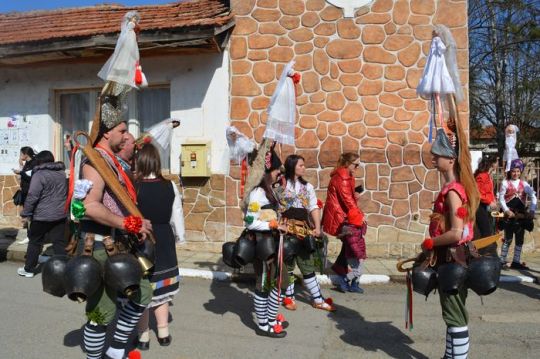
Bolshevization and Economic Transformations
Bolshevization and Economic Transformations (1944-1952)
Soviet Occupation and Early Economic Measures (1944-1947)
After the Soviet army occupied Bulgaria and imposed a Communist government in 1944, the bolshevization of the country swiftly commenced. The “Two Year Preparatory Plan (1947-1948)” marked the initiation of a purely Bolshevik form of economic restructuring. Two trade agreements with the USSR were signed, and by the end of 1947, nationalization efforts took place, covering banks, mines, and most industries. Private banks were merged into The Bulgarian National Bank.
Industrial Categorization and Artisan Co-operatives (1944-1948)
The industrial categorization mirrored the Soviet pattern, establishing 20 industrial “complexes.” Simultaneously, artisans were compelled to join the “Producers’ Co-operatives of Craftsmen.” The growth of these co-operatives and their members from 1944 to 1948 is shown below:
Year Members Co-operatives
1944 3,282 86
1947 27,442 713
1948 44,000 1,037
3. First Five Year Plan and Economic Shifts (1949-1952):
The First Five Year Plan, intended for 1949-1952, was “completed” in four years amid bloodshed, terror, and concentration camps. Peasants’ revolts were quelled Guided Istanbul Tour. The regime aimed to alter the correlation between industrial and rural economic productions and between the Socialist and private sectors. According to official data:
Year Industry Rural Economy
1939 27.1% 72.9%
1948 39.4% 60.6%
1952 55.9% 44.1%
In the same period, the Socialist sector’s (state and co-operative ownership) dominance expanded significantly:
Year Socialist Sector Private Sector
1939 — 100
1948 44.5% 55.5%
1952 87% 13%
Heavy industry production saw notable growth compared to light industry:
Year Heavy Industry Light Industry
1952 46.7% 53.3%
Simultaneously, there was a substantial increase in the proletarization of the workforce, with the number of workers and employees rising from 330,000 in 1948 to 970,000 in 1952.
0 notes
Photo
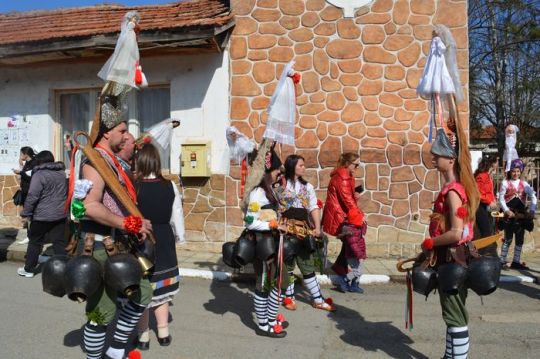
Bolshevization and Economic Transformations
Bolshevization and Economic Transformations (1944-1952)
Soviet Occupation and Early Economic Measures (1944-1947)
After the Soviet army occupied Bulgaria and imposed a Communist government in 1944, the bolshevization of the country swiftly commenced. The “Two Year Preparatory Plan (1947-1948)” marked the initiation of a purely Bolshevik form of economic restructuring. Two trade agreements with the USSR were signed, and by the end of 1947, nationalization efforts took place, covering banks, mines, and most industries. Private banks were merged into The Bulgarian National Bank.
Industrial Categorization and Artisan Co-operatives (1944-1948)
The industrial categorization mirrored the Soviet pattern, establishing 20 industrial “complexes.” Simultaneously, artisans were compelled to join the “Producers’ Co-operatives of Craftsmen.” The growth of these co-operatives and their members from 1944 to 1948 is shown below:
Year Members Co-operatives
1944 3,282 86
1947 27,442 713
1948 44,000 1,037
3. First Five Year Plan and Economic Shifts (1949-1952):
The First Five Year Plan, intended for 1949-1952, was “completed” in four years amid bloodshed, terror, and concentration camps. Peasants’ revolts were quelled Guided Istanbul Tour. The regime aimed to alter the correlation between industrial and rural economic productions and between the Socialist and private sectors. According to official data:
Year Industry Rural Economy
1939 27.1% 72.9%
1948 39.4% 60.6%
1952 55.9% 44.1%
In the same period, the Socialist sector’s (state and co-operative ownership) dominance expanded significantly:
Year Socialist Sector Private Sector
1939 — 100
1948 44.5% 55.5%
1952 87% 13%
Heavy industry production saw notable growth compared to light industry:
Year Heavy Industry Light Industry
1952 46.7% 53.3%
Simultaneously, there was a substantial increase in the proletarization of the workforce, with the number of workers and employees rising from 330,000 in 1948 to 970,000 in 1952.
0 notes
Photo
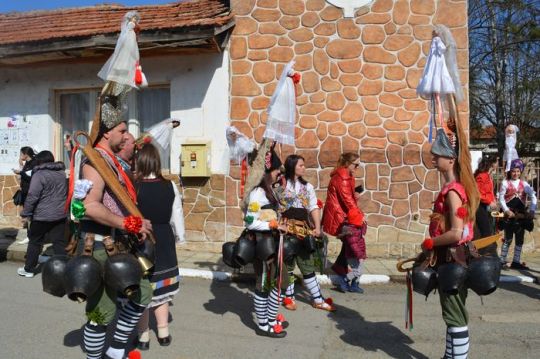
Bolshevization and Economic Transformations
Bolshevization and Economic Transformations (1944-1952)
Soviet Occupation and Early Economic Measures (1944-1947)
After the Soviet army occupied Bulgaria and imposed a Communist government in 1944, the bolshevization of the country swiftly commenced. The “Two Year Preparatory Plan (1947-1948)” marked the initiation of a purely Bolshevik form of economic restructuring. Two trade agreements with the USSR were signed, and by the end of 1947, nationalization efforts took place, covering banks, mines, and most industries. Private banks were merged into The Bulgarian National Bank.
Industrial Categorization and Artisan Co-operatives (1944-1948)
The industrial categorization mirrored the Soviet pattern, establishing 20 industrial “complexes.” Simultaneously, artisans were compelled to join the “Producers’ Co-operatives of Craftsmen.” The growth of these co-operatives and their members from 1944 to 1948 is shown below:
Year Members Co-operatives
1944 3,282 86
1947 27,442 713
1948 44,000 1,037
3. First Five Year Plan and Economic Shifts (1949-1952):
The First Five Year Plan, intended for 1949-1952, was “completed” in four years amid bloodshed, terror, and concentration camps. Peasants’ revolts were quelled Guided Istanbul Tour. The regime aimed to alter the correlation between industrial and rural economic productions and between the Socialist and private sectors. According to official data:
Year Industry Rural Economy
1939 27.1% 72.9%
1948 39.4% 60.6%
1952 55.9% 44.1%
In the same period, the Socialist sector’s (state and co-operative ownership) dominance expanded significantly:
Year Socialist Sector Private Sector
1939 — 100
1948 44.5% 55.5%
1952 87% 13%
Heavy industry production saw notable growth compared to light industry:
Year Heavy Industry Light Industry
1952 46.7% 53.3%
Simultaneously, there was a substantial increase in the proletarization of the workforce, with the number of workers and employees rising from 330,000 in 1948 to 970,000 in 1952.
0 notes
Photo

GOLDOSK
A Journey from Two Friends’ Walks to a Thriving Nature Sports Club
A Healthy Initiative Blossoms
One beautiful Sunday morning in the spring of the 2010s, a friend and I in Isparta decided to embark on a healthy 2-kilometer walk towards the hills. Eager to make this a regular and enjoyable activity, we envisioned forming a group committed to a healthy lifestyle intertwined with nature. Little did we know that this simple idea would evolve into something much larger.
From Two to Over 95 Members
Our initial walks paved the way for the creation of the Turkish Lakeland Nature Sports and Hobby Club, lovingly known as GOLDOSK. With a mission to encourage citizens to embrace nature, slow down, and escape stress, GOLDOSK has grown to over 95 members. Liked by thousands on social media, the club has become a symbol of active living in Isparta.
Exploring Local Beauties
Despite living in Isparta for over 30 years, I had never truly appreciated the natural beauty of the region. What were once green and brown areas on the city map became the picturesque locations we explored over the past year and a half. Every Sunday, our group traded sleep for dirt roads, thyme-scented pine forests, and the vibrant colors of spring flowers Guided Tours Turkey.
Adventures for All Ages
What began as treks for two blossomed into adventures for tens. Our diverse group includes officers, businessmen, writers, professors, workers, and retirees, spanning ages from 10 to 70. Generational differences melted away as friendships flourished, and every Sunday, we converged at the GOLDOSK building within Isparta Teraspark facilities.
GOLDOSK’s Recognition and Achievements
GOLDOSK’s commitment to promoting a healthy lifestyle through nature sports has not gone unnoticed. The club boasts over 100 completed activities, gaining recognition from the International Federation of Popular Sports (IVV). As the most active and enjoyable organization in the Lakeland, GOLDOSK received an official invitation to the 12th Nature and Popular Sports Games hosted by IVV in Antalya.
Crocuses Smiling Under the Rain
GOLDOSK’s journey is marked by the smiles of crocuses under the rain, symbolizing the joy, growth, and flourishing camaraderie within the club. As we continue our adventures, our aim is to expand the culture of embracing nature and organizing diverse activities, turning GOLDOSK into a beacon for Lakeland’s nature enthusiast
0 notes
Photo

GOLDOSK
A Journey from Two Friends’ Walks to a Thriving Nature Sports Club
A Healthy Initiative Blossoms
One beautiful Sunday morning in the spring of the 2010s, a friend and I in Isparta decided to embark on a healthy 2-kilometer walk towards the hills. Eager to make this a regular and enjoyable activity, we envisioned forming a group committed to a healthy lifestyle intertwined with nature. Little did we know that this simple idea would evolve into something much larger.
From Two to Over 95 Members
Our initial walks paved the way for the creation of the Turkish Lakeland Nature Sports and Hobby Club, lovingly known as GOLDOSK. With a mission to encourage citizens to embrace nature, slow down, and escape stress, GOLDOSK has grown to over 95 members. Liked by thousands on social media, the club has become a symbol of active living in Isparta.
Exploring Local Beauties
Despite living in Isparta for over 30 years, I had never truly appreciated the natural beauty of the region. What were once green and brown areas on the city map became the picturesque locations we explored over the past year and a half. Every Sunday, our group traded sleep for dirt roads, thyme-scented pine forests, and the vibrant colors of spring flowers Guided Tours Turkey.
Adventures for All Ages
What began as treks for two blossomed into adventures for tens. Our diverse group includes officers, businessmen, writers, professors, workers, and retirees, spanning ages from 10 to 70. Generational differences melted away as friendships flourished, and every Sunday, we converged at the GOLDOSK building within Isparta Teraspark facilities.
GOLDOSK’s Recognition and Achievements
GOLDOSK’s commitment to promoting a healthy lifestyle through nature sports has not gone unnoticed. The club boasts over 100 completed activities, gaining recognition from the International Federation of Popular Sports (IVV). As the most active and enjoyable organization in the Lakeland, GOLDOSK received an official invitation to the 12th Nature and Popular Sports Games hosted by IVV in Antalya.
Crocuses Smiling Under the Rain
GOLDOSK’s journey is marked by the smiles of crocuses under the rain, symbolizing the joy, growth, and flourishing camaraderie within the club. As we continue our adventures, our aim is to expand the culture of embracing nature and organizing diverse activities, turning GOLDOSK into a beacon for Lakeland’s nature enthusiast
0 notes
Photo
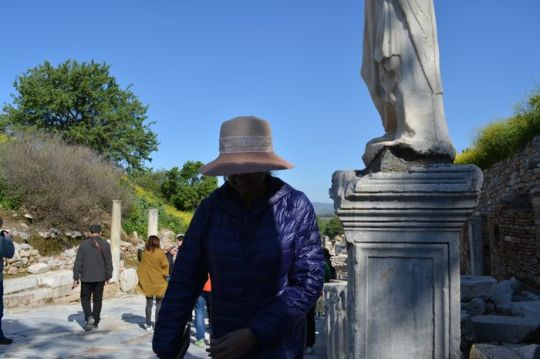
A Village Reduced to Ashes and Ashen Dreams
The Withered Roses of Klissura
This article unveils the heartbreaking saga of Klissura, a once-flourishing village that now stands as a stark testament to the ruthlessness of destruction. Tassun Bey’s merciless onslaught left behind not just ashes but shattered lives and extinguished dreams. The tragic fate of Klissura exposes the depth of the atrocities inflicted upon its innocent inhabitants.
The Desolation of a Once-Proud Village
Klissura, adorned with 700 homes and a thriving community, lay in ruins after Tassun Bey’s onslaught. Not a single house stood untouched, leaving the village in a state of desolation. The Mudir’s grim assessment revealed that a mere fifty families could contemplate the daunting task of rebuilding, with most lacking the means to even start anew.
Crippled Lives and Uncertain Futures
The aftermath of Klissura’s destruction painted a grim picture of lives left in shambles. Families, once engaged in the cultivation of roses and the artistry of manufacturing attar of roses, now found themselves bereft of homes and livelihoods. The uncertainty of the impending winter loomed large, casting shadows on the villagers’ ability to rebuild their lives Tour Bulgaria.
An Orchestrated Plunder
Tassun Bey’s marauding forces orchestrated a meticulously planned pillaging of Klissura. The village’s 130 to 150 small manufacturing units, boasting 500 copper retorts for distilling rose leaves, represented a substantial capital of £5,000. However, the invaders spared nothing, looting not just furniture and cattle but even dismantling the very roofs for tiles. In the aftermath, they combed through the ashes, scavenging for iron and nails with a chilling efficiency.
Lives Reduced to Ashes
Beyond the tangible losses, the true tragedy lies in the shattered lives of Klissura’s residents. The anguish of families, robbed of their homes, possessions, and livelihoods, resonates as a haunting echo of the once-vibrant village. The pillars of the community lay broken, and the future for the survivors remains clouded with uncertainty.
A Plea for Justice and Restoration
Klissura’s agony calls for a resounding plea for justice and restoration. The international community must bear witness to the devastation inflicted upon this village and others like it. Only through collective efforts to bring the perpetrators to justice and aid the survivors in rebuilding their lives can the echoes of Klissura’s tragedy be transformed into a resilient call for hope and renewal.
0 notes
Photo
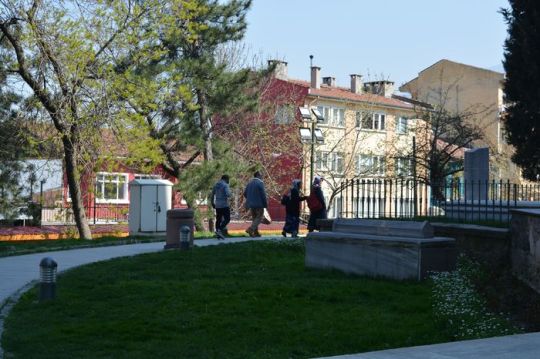
A Serene Ascent
Exploring the Tranquil Terrain on the Way to Avrat-Alan
The Rustic Elegance of Mountain Air: A Respite from Turkish Roads
Embarking on horseback towards Avrat-Alan, the journey unfolded as a delightful respite from the turbulent experience of navigating Turkish roads in carriages. As we ascended into the mountains, a refreshing transformation greeted us—cool and invigorating air replaced the stifling warmth of the plains below. The mountains, adorned with dense woods, provided a picturesque landscape, and the thick-set foliage offered a welcoming shade, creating a serene ambiance that contrasted sharply with the recent scenes of suffering left behind.
The ascent through the woods became a therapeutic escape, allowing us to detach from the harrowing sounds of human anguish that lingered in the aftermath of the Otluk-kui tragedy. The journey, now characterized by the soothing sounds of rustling leaves and the occasional murmur of a sparkling stream, unfolded at a leisurely pace. The horses, carrying both riders and the weight of recent memories, meandered through the woods, offering a gentle rhythm to our contemplative progress.
Nature’s Tapestry Unveiled A Panoramic View from the Peaks
The landscape’s metamorphosis continued as we reached the summit of the mountains, which, in truth, were the foothills of the majestic Balkans. At this vantage point, a breathtaking panorama unfurled before our eyes—an expansive and enchanting plain, the valley of the Maritza, stretched out below. This vast expanse, home to notable locations such as Tatar Bazardjik, Philippopolis, and Adrianople, extended for miles to the south.
The view was crowned by the majestic arc of the Balkans, a natural barrier delineating the boundary between the Maritza and the Aegean Sea. The sweeping curve of these mountains, a grand and noble display of nature’s artistry, formed a watershed that added to the splendor of the scenery. From this elevated vantage point, the landscape became a tapestry of greenery, accentuated by the subtle interplay of shadows and sunlight. It was a rare and captivating spectacle, offering a moment of solace and appreciation for the beauty that nature could conjure even in the wake of human tragedy Bulgaria Holidays.
The culmination of our ascent not only marked a physical elevation but also served as a metaphorical ascent from the depths of despair, embracing the serene beauty that the mountains generously bestowed upon us. As we gazed upon the expansive plain below, a sense of renewal and optimism took root, reminding us that nature, with its timeless grace, could soothe even the most wounded spirits.
0 notes
Photo
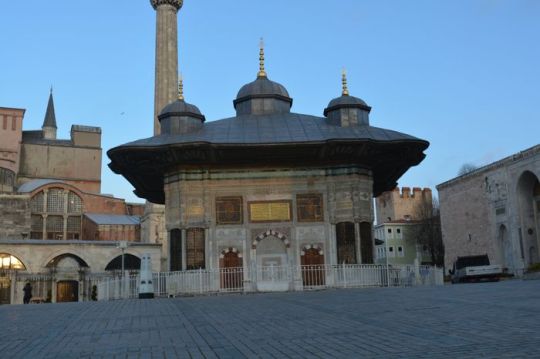
The Greek inscription
The dome is 57 feet in diameter, and rests on eight piers, intersected by a double row of thirty-four green and white columns, sixteen of which are in the lower row, and the remaining eighteen in the galleries. The Greek inscription, running round the frieze, is ornamented with carved vine leaves and grapes, and is a dedicatory poem to the two saints; but all the mosaics and frescoes forming part of the original ornamentation of the church have been covered with whitewash. Ducange states that this was the church in which the papal Nuncio, for the time being, was allowed to hold divine service in Latin ; and it was here that Pope Virgil sought refuge from the wrath of Justinian for having excommunicated Patriarch Menas; this was also the church which the Emperor attended in state every Easter Tuesday.
Mehmed Pasha Mosque, on the south-west side of the Hippodrome, not far from Kutchuk Ayiah Sofia. Admission 5 piastres (10d.). This mosque is regarded (Dr. A. G-. Paspati, ‘ BvavnvaX MeXerat ) as the ancient church of St. Anastasia Pharma- kolytria, variously attributed to Anastasius Dicorus, in the fifth century, and to Gregory Nazianzenus, the latter of whom preached orthodoxy in it during the predominance of Arianism in the city. The church has been rebuilt and restored several times, and notably by Basil of Macedon, who replaced its wooden cupola by a stone one.
Most of the ornaments and relics were carried off by the Latins during the crusade of 1204. The immediate vicinity of this church, extending as far as the Cistern of Philoxenus (Thousand and One Columns), is supposed by Dr. Paspati to have been the site of the city Praetorium and the Portico of Domninus. The church was converted into a mosque in 1571 by Mehmed Pasha Socoll, son-in-law of Selim II. The tiles with which the interior is ornamented guided tours istanbul, and especially those forming the panels over the windows and the canopy over the pulpit, are masterpieces of Persian art. The courtyard is one of the most picturesque, and makes a charming subject for sketches or photographs.
The Church in the Fields
The Church in the Fields (17 Movrj TT)? Xwpa?), now Kahriyeh Jamesi, better known to travellers as the Mosaic Mosque. Admission 5 piastres per head. The Imam (priest) in charge is not always in attendance, but lives close by, and will always come if sent for. This mosque suffered so severely during the earthquakes of 1894 as to be in danger of falling down, and it has been deemed advisable, in consequence, to close it for an indefinite period. It is situated near the land walls and close to Edimth Kaj)u (Adrianople Gate); it is one of the most interesting of all the whilom Byzantine churches, both on account of its plan and of the mosaic pictures covering the walls of its outer and inner nartheces, the greater part illustrating the life of Christ. Its Greek name, showing that it originally stood outside the city, carries the foundation back to the period prior to 413 A.D., when it was enclosed within the walls of Theodosius.
Very probably the church was erected as a private chapel in connection with the Hebdomon Palace. Justinian restored it and added a basilica, and in the early part of the seventh century it was further restored and embellished by Crispus, son-in-law of the Emperor Phocas, who was imprisoned in it for treachery by Heraclius, and subsequently became a monk. In the early part of the twelfth century the church was rebuilt and restored by Maria Ducaina, mother-in-law of Alexius Comnenus; and about the middle of the fourteenth century its chapels and nartheces were again restored throughout and embellished by the patrician Theodoras Metochites.
0 notes
Photo
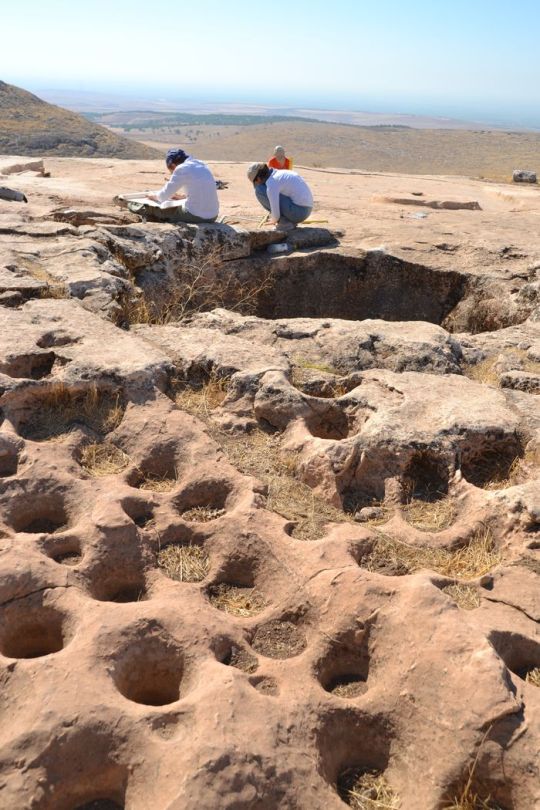
TWO THEODOSIAN CAPITALS
7. TWO THEODOSIAN CAPITALS
Workshop on the Island of Prokonnesos in the Sea of Marmara (?) 5th – 6th century Marble
H. 39,5 cm; diam. 34,5 cm
The village of Maryan, Elena area, Lovech region
8. CAPITAL WITH HUMAN FACES
Eocal workshop 6th century Sandstone
H. 33 / 34 cm; diam. of the base 20 cm; abacus 34 x 35 cm
Discovered accidentally in the fields of the village of Belopoptsi, Sofia region
9. CAPITAL WITH HEADS OF RABBITS
Workshop on the Island of Prokonnesos in the Sea of Marmara 5th century Marble
H. 40 cm; diam. 35 cm; abacus 41 x 41 cm
The capital entered the Museum in 1914 brought from the town of Obzor, Burgas region
10. CAPITAL WITH TWO CORNUCOPIAE
Local workshop Late 5th – early 6th century Limestone H. 30 cm; diam. 39 cm; abacus 44 x 64 cm
Discovered in a Medieval church in the village of Lyutibrod bulgaria tour, Vratsa region, together with 13 more Ionian Kaempfer capitals from the same date, now in the Museum of Vratsa.
11. BALCONY SLAB OF A PULPIT
Local work, Constantinople type 6th century Grey sandstone 1,36 x 1,42 x 0,23 m
Discovered in Sofia, at the corner of Saborna and Kaloyan streets, during construction works. Prob-ably the pulpit belonged to a church dedicated to St. George. The slab was found together with some fragments of the pulpit railings decorated with embossed crosses.
12. SLABS AND COLUMNS FROM ALTAR SCREENS A reconstruction
A PAIR OF SLABS
Workshops on the Island of Prokonnesos in the Sea of Marmara 5th – 6th century
Marble
1,15 x 0,93 x 0,14 m; 1,17 x 0,96 x 0,12 m
Discovered during archaeological research of a ba-silica in Hisar, Plovdiv region, next to the southern side entrance
A PAIR OF COLUMNS
Workshops on the Island of Prokonnesos in the Sea of Marmara 6th century Marble
H. 1,10; 0,25 X 0,23; h. 0,99; 0,21 x 0,21
Discovered in the fortress ofTsepina, the village of Dorkovo, Plovdiv region
13. RELIQUARY
Eastern Mediterranean 4th century Alabaster H. 12 cm; diam, of the body 7,4 cm; diam. of the opening 4 cm
Discovered in the altar area of an Early Christian basilica in Odessos (Varna) during archaeological research Varna, Regional Museum of History, lnv. Nil 1130
The reliquary is shaped as a flask.
14. RELIQUARY COMPLETE WITH TWO BOXES
Asia Minor (Syria)
5th century
Discovered in Dzhanavara, by the southern bank of the Varna Lake, 4 km southwest of Varna. A find of 1920 in the area of a church from the Early Christian age. It was in the altar, in a niche in the eastern wall of a small crypt built in bricks. The reliquary and the boxes were found undamaged in the church. The reliquary was in a fabric sack, the inner box was wrapped in dark cloth. The reliquary contained fragments of human bones and a piece of wood probably the Golgotha Cross, which turned into ashes the minute they were uncovered and the air was let inside. The same church treasured other relics of saints found near the pulpit.
0 notes
Photo

Balkantourist on the turning to Balchik
Each hotel has its own parking lot. The car repair service of Balkantourist on the turning to Balchik has good mechanics, spare parts and washing facilities. It is open from 7.00 a.m. to 8.00 p.m. Tel. 6-53-16. There is a filling station open 24 hrs near the Kosharata restaurant. Near the Casino is a rent-a-car service open from .00 a.m. to 10.00 p.m. Tel. 6-53-63.
Places of entertainment and night dubs offer pleasant and varied programmes.
Tsiganski Tabor (Gypsy Campj Night Club serves delicious dishes and excellent wines in Gypsy tents to the music of a Gypsy orchestra. Open from 9.00p.m. to 2.00 am.
Koukeri (Masked Dancers) Night Club — an original architectural building; ‘Koukeri’ dances are performed with quaint folk masks. The night club commands a marvellous view of the whole resort Open from 9.00 p.m. turkey sightseeing to 4.00 a.m.
Karakachanski Stan, The atmosphere is reminiscent of nomad Karakachan shepherd settlements in the Rhodopes. It is situated in the forest next to the Kolibite. Open from 4,00 p rh. to 2.00 a.m.
Vodenitsata — an original folk restaurant serving grilled chicken, kebabs, home-made sausages and freshly baked bread. Open from 9.00 a.m. to midnight.
Astoria Bar – a modern night club, open May to October. Interesting floor show, music and dancing. Next to Hotel Astoria. Open from 10.00 p.m to 4.00 a.m.
Caney Night Club — exotic atmosphere, Cuban cocktails, firstclass orchestra. Adjacent to Havana Hotel. Open from 4.00 p.m. to midnight.
Prifon Zarezan Restaurant. An original restaurant with a special room for wine-tasting. Bulgarian cuisine and a well- stocked bar. On the road to Varna. Open from 9.00 aan. to midnight.
Lovna Sreshta in a wood close to the Aladja Rock Monastery serves local game dishes. Orchestra. Open from 9.00 a.m, to midnight.
Picnic — a taverna in the heart of the forest near Lovna Sreshta. Grills and excellent drinks are served. Nightly programmes of folk songs and dances. Open from 5.00 p.m. to 10.00 p.m.
The Rocky Monastery
The Rocky Monastery three kilometres from Zlatni Pyas- satsi in one of the most picturesque areas of the Bulgarian Black Sea coast is an old monastery carved from the rocks, consisting of an upper and a lower part. The cells are two and a half by two metres. 1 he church is 11.70 metres long, 5 metres wide and 2 metres high. The altar has two alcoves wit mural paintings. The monastery was most probably founded in the 13th-14th century. 300 metres away are the catacombs — cells carved out of the rock and probably used as dwellings by the monks.
The Museum of the Chalcolytic Necropolis (discovered in 1975) is to be found at the entrance of the monastery. It holds old ornaments, weapons and other artefacts.
The Varna Chalcolytie Necropolis, discovered in 1972 on the western outskirts of the city, is an exceptional find which aroused wide international interest The Necropolis dates from the end of the Chalcolytie period, 3,000 B.C By the end of 1976, 81 graves had been found, 25 of them symbolic graves with no skeletons In grave Number One, was a treasure-trove of ornaments, artefacts of solid heaten gold (23.5 carats), 3 bracelets, a rectangular plate, 2 thimbles, 6 rings, 28 round plates, 6 trapezium-shaped and 4 moon-shaped plates, 160 cylindrical beads, with a total weight of 1,091 kg, copper tools, flint knives, a bone knife, 2,095 beads and various ceramic pieces. In graves Number 2,3 and 15 gold artefacts were discovered such as plates, rings and beads. Grave Number 4 contained gold bracelets, plates, rings, beads and other things with a total weight of 1,518 kg, as well as two clay vessels full of gold ornaments.
In Grave Number 43 the skeleton was found of a man about 40-50 years of age with various rich ornaments as well as several hundred gold artefacts totalling 1,516 kilograms and other copper and clay vessels and ornaments. This must have been the grave of a nobleman.
0 notes